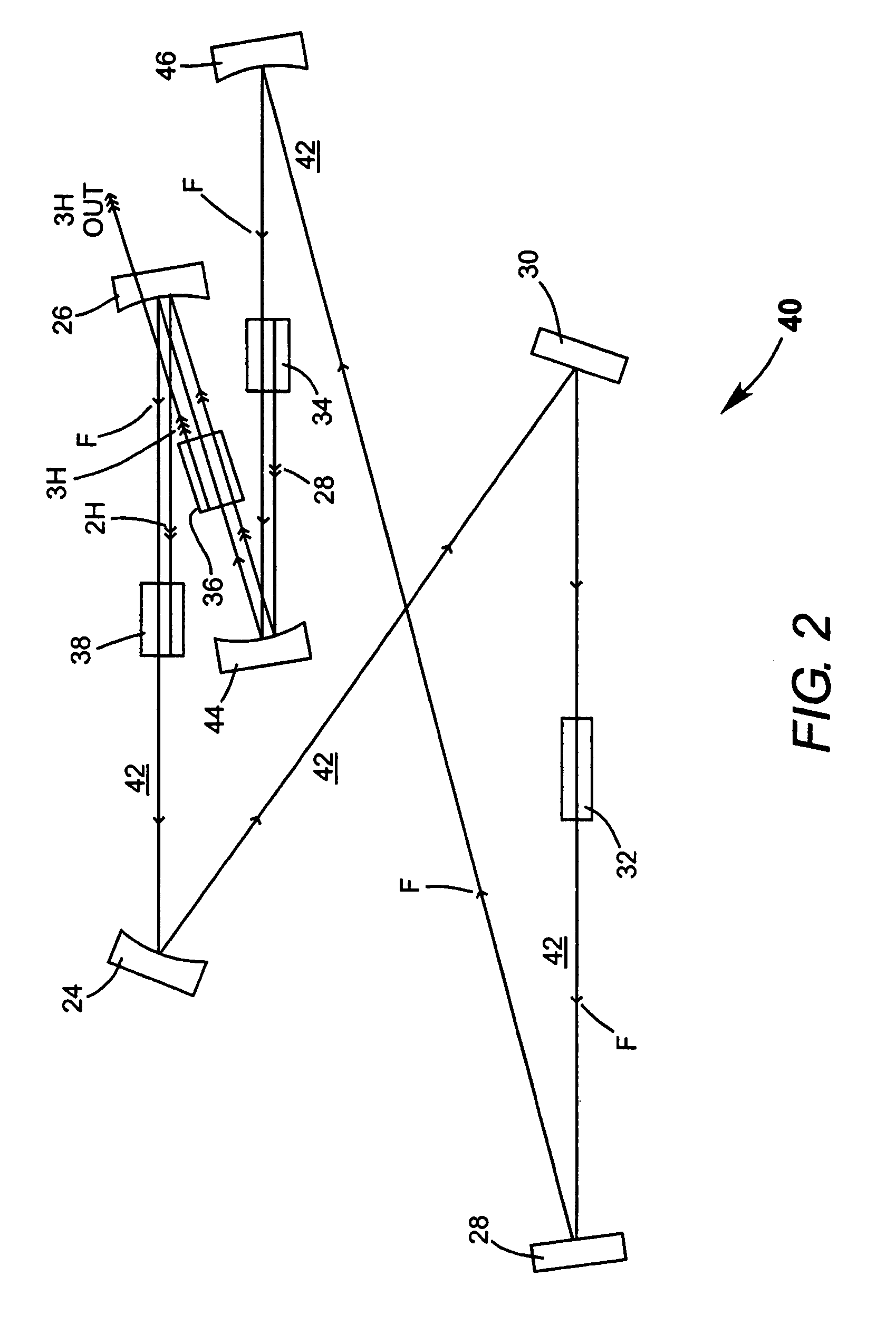Intracavity frequency-tripled CW laser with traveling-wave ring-resonator
a ring-resonator, frequency-tripled technology, applied in the direction of laser output parameters control, laser details, active medium materials, etc., can solve the problem of relative inefficiency in the conversion of fundamental radiation to the third harmonic, and achieve the effect of improving the third harmonic generating efficiency
- Summary
- Abstract
- Description
- Claims
- Application Information
AI Technical Summary
Benefits of technology
Problems solved by technology
Method used
Image
Examples
embodiment 130
[0066]FIG. 17, and FIG. 18, schematically depict an additional embodiment 130 of a laser in accordance with the present invention includes a bi-planar traveling-wave ring resonator 132. Resonator 132 is arranged to accommodate the crystal cut arrangement of FIGS. 13A and 13B with type 1 phase matching for third-harmonic generating crystal 36. In FIG. 17, laser 130 is depicted in three-dimensional form to illustrate the spatial arrangement of components in two planes arranged one above the other. In FIG. 18 details of polarization orientation of fundamental (F) and second harmonic (2H) radiation at various locations in the resonator are depicted. In FIG. 16 radiation paths and optical components in the lower and upper planes are indicated by long dashed lines and solid lines, respectively. A partially separate path for 2H radiation in the upper plane is depicted by dotted lines. In both FIGS. 17 and 18, the direction of circulation of fundamental, second harmonic, and third-harmonic ...
embodiment 140
[0086]FIG. 21 schematically illustrates another additional embodiment 140 of an intracavity frequency-tripled, CW laser in accordance with the present invention. Laser 140 is similar to laser 120 of FIG. 4 but includes a polarization-selective optical arrangement 142 configured to create a path difference between fundamental and second-harmonic radiation for causing the frequency dependence of phase relationship at 2H-radiation reconverting crystal 38 between the fundamental and 2H-radiation. The 2H-generating crystal 36 is arranged for type 1 phase matching, but with ends square cut such that fundamental and 3H radiations exit the crystal on a common path. Waveplates 94 and 116 are included for rotating the polarization of fundamental and 2H-radiations as discussed above with respect to laser 130.
[0087]Phase adjusting arrangement 142 includes a polarizing beamsplitter and re-combiner 144 located between waveplate 116 and crystal 38. At an internal surface 146 of the polarizing beam...
PUM
 Login to View More
Login to View More Abstract
Description
Claims
Application Information
 Login to View More
Login to View More - R&D
- Intellectual Property
- Life Sciences
- Materials
- Tech Scout
- Unparalleled Data Quality
- Higher Quality Content
- 60% Fewer Hallucinations
Browse by: Latest US Patents, China's latest patents, Technical Efficacy Thesaurus, Application Domain, Technology Topic, Popular Technical Reports.
© 2025 PatSnap. All rights reserved.Legal|Privacy policy|Modern Slavery Act Transparency Statement|Sitemap|About US| Contact US: help@patsnap.com



